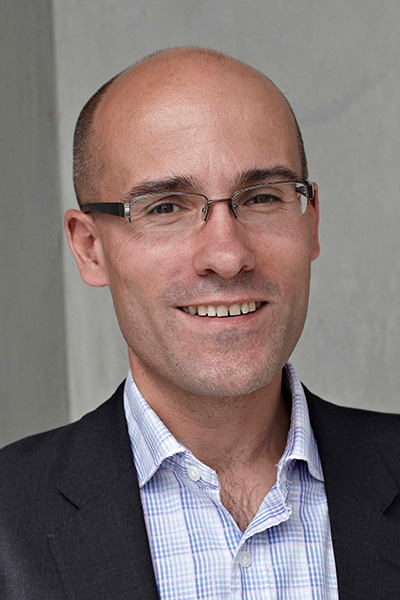New area of study aims to use tumor evolution to fight cancer
//
Estimated Read Time:
Tumor evolution is moving from scientific curiosity toward clinical tool. Recent findings link mutational burden in normal tissues with tumorigenesis, while ongoing research is examining how tumor evolution can be directed in useful directions.

Against this backdrop, the AACR established a Cancer Evolution Working Group in July 2021 and planned a plenary session dedicated to tumor evolution for the final day of this year’s Annual Meeting.
“This field will help us in early cancers, help us define the clonal fitness landscape,” said Anna D. Barker, PhD, Ellison Institute for Transformative Medicine at the University of Southern California. “If you know which clones are more likely to seed metastases, you can start working on trials and clinical applications. The thought of blocking evolution is opening a lot of possibilities. We are going to see people putting evolution to work in the very near future.”
Barker chaired the plenary session Tumor Evolution and Therapeutic Resistance on Wednesday, April 13. The session can be viewed on the virtual platform by registered meeting participants through July 13, 2022.

“We are quite blind to the early steps of cancer evolution,” noted the session’s first speaker, Peter J. Campbell, MBBCh, PhD, FAACR, Wellcome Trust Sanger Institute, Cambridge, United Kingdom. “We need to start by looking at normal tissue. What we see in cancer is a reflection of what’s going on in normal, polyclonal tissue.”
By sequencing successive breast tissue samples from 33 women, Campbell found that mutations in normal tissue accumulate at a linear rate over time. Human breast cells accumulate about 13 mutations every year of life, he said.
Puberty causes large clonal expansions in breast tissue that are preprogrammed by existing cell lineages, including driver mutations and copy number mutations, he explained. Random somatic mutations can lead to the development of more aggressive clones that can expand to become tumors. Exposure to radiation or chemotherapy can accelerate mutation.
“The mutational burden is orders of magnitude greater in tumor cells than in normal tissue,” Campbell said. “There are specific mutations that drive cancer.”

Single-cell genomics can help identify and target some of those mutations. Current single-cell technologies include scDNA-Seq, scRNA-Seq, scEpigenomics, and scMulti-omics, noted Nicholas E. Navin, PhD, MD Anderson Cancer Center.
“Single-cell DNA and RNA sequencing have real opportunity for impact in early detection, diagnosis and risk stratification, drug target discovery, targeting TME cell types, targeting selection for tumor cells, and noninvasive monitoring,” Navin said.
Single-cell sequencing of archival breast tissue samples has revealed the development of subclones years to decades before progression of ductal carcinoma in situ, he continued.
Some invasive tumors are the result of independent evolution representing independent lineages from different initiating cells. Other tumors evolve from the selection of a single clone, and some tumors feature co-invasion of multiple clones, Navin explained.
“Patients with few subclones have more manageable disease, but [having] multiple clones opens the potential to persist beyond early treatment and progress to recurrent disease,” he said.

Advances in technology are improving researchers’ understanding of the role of evolution and evolutionary pressures in cancer progression. More than a decade ago, Christine A. Iacobuzio-Donahue, MD, PhD, Memorial Sloan Kettering Cancer Center, implicated SMAD4 dysregulation in the progression of pancreatic ductal adenocarcinoma (PDAC).
Single-cell technologies developed since then have shown that SMAD4 is inactivated in a subclonal manner, as is TGFBR2. Inactivation of these two pathways is almost mutually exclusive and driven by different selective pressures in the stroma, Iacobuzio-Donahue explained.
“We need to move beyond SMAD4 status as a predictive biomarker in stage III PDAC and, at the very least, include TGFBR2 in prospective studies and clinical trials,” she said. “We need to rethink stromal targeting and not use it in de novo or in recurrent metastatic disease—stromal targeting is most relevant to the primary tumor site. And we need to understand the mechanistic underpinnings of the phenotypic differences we see.”

Exploring myeloid malignancies through the lens of cell biology is pointing to hematopoietic stem cell evolution as a promising target to treat, according to Emmanuelle Passegué, PhD, Columbia University Irving Medical Center. The recognition of clonal hematopoiesis is identifying new opportunities to target myeloproliferative neoplasms, myelodysplastic syndrome, and acute myeloid leukemia, she explained.
Hematopoietic stem cells exist in one of two states. They can regenerate as needed or they can be activated to produce lineage-based multipotent progenitors (MPP), which differentiate into lineage-committed progenitors and different blood cell types. Mutation can disrupt that orderly progression.
Growing evidence suggests that dysregulation and acute activation of emergency myelopoiesis leads to reprogramming, overaccumulation, and clumping of granulocyte-monocyte progenitors (GMPs), which progresses to myeloid-based proliferation, Passegué explained.
The regeneration process can be dysregulated, leading to myeloid malignancies, she added. “We can target the maladaptive activation of emergency myelopoiesis by blocking multipotent progenitor secretion, at least in mice. We cannot stop the process, but we can dampen it,” she explained.
Distinguishing between cancers that are more likely to progress to metastatic disease from those that are less likely to progress is a key clinical question. Cancers that do not metastasize might be treated more effectively, particularly if found early, while metastatic cancers typically have a worse prognosis, Passegué said.
Spatial and temporal tumor sequencing of 421 patients with stage I to stage IIIA non-small cell lung cancer (NSCLC) with serial blood sampling and metastatic biopsies is providing early answers.

Primary tumors are a patchwork of spatially diverse, intermixed, and related subclones, said Charles Swanton, MBPhD, FRCP, FMedSci, FRS, FAACR, the Francis Crick Institute and University College London Hospitals, United Kingdom. Most NSCLCs do not have a regionally dominant subclone, he noted.
“But when we find tumors that have one or more regionally dominant subclones, we see that they relapse earlier after earlier resection of the primary tumor,” Swanton explained. “What we find is that dominant subclones in primary tumors very frequently seed metastases.”
Tumors with more than one dominant subclone have poorer outcomes than tumors with a single dominant subclone, he continued. Polyclonal tumors are more likely to seed extrathoracic and visceral metastases, leading to more pervasive and aggressive disease.




